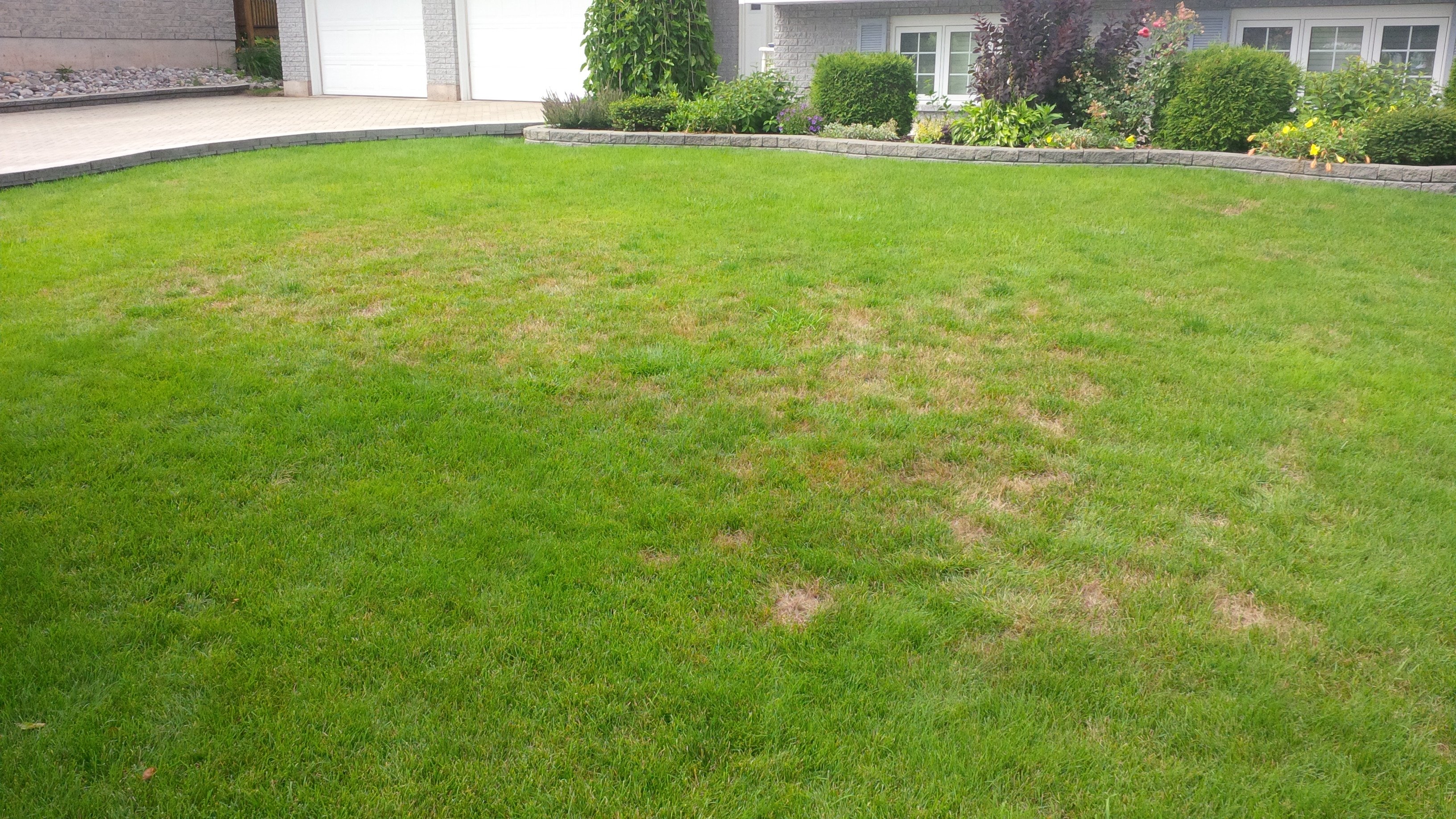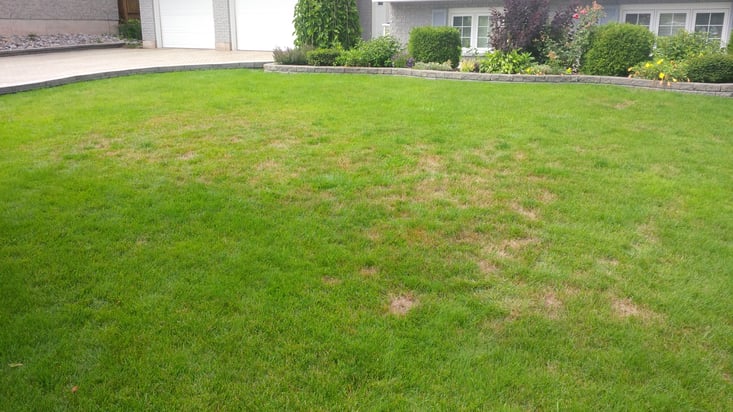2 min read

By: Robert Bourne, Nutri-Lawn Vancouver on Jul 25, 2016 12:49:08 PM


Hairy chinch bugs are small insects that as nymphs stay beneath the trees, shrubs, and flowers in your gardens causing little harm. Once they reach adult-hood in mid-July, they move out into your lawn and suck all the sappy goodness from the crowns and stems of your turf grass and leave behind circular brown patches. No harm no foul until they kill your grass, right? The damage can be seen later in July and throughout August.
Chinch bugs prefer lawns that get full-sun and are drought stressed. Is that your lawn?
To test to see if you have chinch bugs, cut the top and bottom off a can and sink into your lawn at the edges of a suspected infestation. Fill the cylinder with water and any bugs present will float to the top. Alternatively, you can remove a puck-sized piece of turf and sink it in a bucket of water and watch for bugs to rise up. With either method, you’ll want to repeat this test in multiple locations because the infestations could be isolated to a small area.
The damage from chinch bugs usually isn’t seen until later in July and August, but this will help you know what to watch for and react quickly to lessen the damage caused to your lawn.
When did the damage first appear? Brown dead patches that appear in May or June will be due to another cause. Similarly, the hot drought conditions often present in July can cause your lawn to dormant and appear dead. Chinch bug damage will be circular patches that often grow larger with time.
Where is the damage? Are the dead patches similarly in the shade and the sun, or only in the shade? Chinch bugs prefer sunny locations, especially areas that will see more heat than other areas such as alongside a path or curb, or next to a flower bed.
Do you have a thatch problem? Chinch bugs thrive in lawns with thatch problems. Thatch is a layer of organic material that hasn’t decayed (leaves, grass clippings, etc.) and sits on top of the soil. Thatch traps the heat in the cooler seasons giving shelter to chinch bugs so they can infest your lawn next spring all over again.
If these causes are not present in your lawn, then there’s another cause for the dead patches of grass in your yard. Perhaps there are some furry intruders causing problems, better mowing practices are needed, there is disease, or plain old summer drought.
The best prevention is to water your lawn consistently because chinch bugs prefer hot dry soil. Some varieties of turf grass are equipped to repel these pests. There are a number of home remedies prescribed online, but be cautious because many of those remedies will actually harm your lawn and their effect on the chinch bugs will be difficult to verify if the treatment kills the grass anyway.
Do you have brown or dead patches in your lawn and want to know what’s causing the problem? We can help diagnose the root cause and have the expertise to address the issue and create a lawn you’re proud of.
Contact us for a free quote. Email Vancouver@nutrilawn.com or call 1.604.524.4770